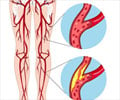
‘A 2 cm-thick layer of foam over the shoulder cap resulted in a 25 percent reduction in the peak linear acceleration of the head, and a 12 percent reduction in peak rotational velocity.’
Tweet it Now
Researchers tested their hypothesis by having collegiate-level hockey players deliver "comfortably hard" checks to the head of an instrumented body-checking dummy, while wearing baseline and modified shoulder pads. They found that a 2 cm-thick layer of foam over the shoulder cap resulted in a 25 percent reduction in the peak linear acceleration of the head, and a 12 per cent reduction in peak rotational velocity.
Their findings, recently published in the journal Medicine and Science in Sport and Exercise, lend support for modifications to shoulder pads to protect the brain health of hockey players.
Why it matters
Shoulder-to-head contact, the most common cause of ice hockey concussions in ice hockey, accounts for 42 per cent of cases in the National Hockey League.
Advertisement
Source-Eurekalert









